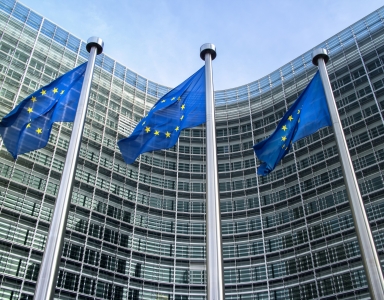What to expect of the Trans-European Networks for Energy (TEN-E) Revision?
The Trans-European Networks for Energy (TEN-E) is a policy that is focused on linking the energy infrastructure of European Union (EU) countries and provides guidelines for the selection of Project of Common Interest (PCIs) PCIs are infrastructure projects considered essential for delivering on EU objectives in the energy field and the list of PCIs is updated every two years. Certain PCI projects are eligible for EU financing from the Connecting Europe Facility (CEF) 2021-2027. . To be aligned with the EU’s 2050 climate neutrality objectives, the revised TEN-E Regulation presented by the European Commission (EC) aims to ensure the EU’s energy security by boosting further electrification, transitioning to renewable gases, and providing enhanced regulatory and permitting provisions to accelerate PCI implementation. The expected TEN-E entry into force is June 2022.
- Main changes within TEN-E
- Focus areas of TEN-E
- Projects of Mutual Interest
- Get CEF Energy funding
- In need of advice or support?
Main changes within TEN-E
There are a few changes within the infrastructure categories compared with the previous TEN-E version. These are the main changes:
- Natural gas infrastructure projects are excluded from the revised TEN-E;
- Hydrogen, and low-carbon and renewable gases are now included;
- There is a strong focus on offshore wind planning and development;
- There is a focus on transport and storage of carbon dioxide;
- The revised TEN-E supports Projects of Mutual Interest (PMIs) with third countries.
Get in touch with a specialist
Focus areas of TEN-E
Electricity
The revised TEN-E increases focus on electricity infrastructure, offshore grid corridors (including H2 when appropriate), and smart electricity grids. The revised document requires the establishment of five offshore priority grid corridors: Northern Seas, Baltic, South–West, South–East, and Atlantic. By the end of 2022, non-binding regional commitments for offshore renewable generation within each sea basin by 2050 must be developed by the Member States. Scale-up of smart electric grids is supported through simplified selection criteria, streamlined cross-border impact and clarification on eligible promoters.
Renewable, low–carbon gases
Natural gas infrastructure projects are excluded from the scope of the revised TEN-E Regulation with the exception of H2 blending into existing natural gas pipelines and storage during a transitional period that will end in 2029. To facilitate the EU’s objectives presented in the Hydrogen Strategy and RePowerEU Joint European Action for more affordable, secure, and sustainable energy, and independence from Russian fossil fuels before 2030. , revised TEN-E supports hydrogen, new and repurposed hydrogen networks, electrolysers above 50MW, and locally produced renewable and low carbon gases such as biogas and biomethane.
The eligible H2 infrastructure is:
- pipelines and repurposed natural gas infrastructure;
- hydrogen storage;
- reception, storage, and regasification of liquid hydrogen.
Furthermore, there are specific requirements for electrolysers of minimum 50MW capacity, demonstrating life cycle GHG savings of 70% and having a network-related function. Smart gas grids involve the IT-focused equipment necessary for integrating renewable and low-carbon gases to replace natural gas such as ICT, control systems, and sensor technologies and equipment. Projects under CO2 networks have a broader scope and include infrastructure for permanent geological storage and transport other than pipelines.
Projects of Mutual Interest
The new Regulation provides support to Projects of Mutual Interests (PMIs). These are projects between the Member States and third countries, that contribute to the EU and the third country’s overall energy and climate objectives in terms of security of supply and decarbonisation. PMIs will have equal treatment as PCIs if they meet the requirements presented in the revised TEN-E document. These projects should be eligible for CEF Energy (CEF-E) funding under the same conditions as for other categories if they meet the Union’s energy and climate policy objectives and criteria set in TEN-E.
The expected timeline
The 6th PCIs applications are expected by the end of October 2022, while a draft list of accepted PCI projects should be available in June 2023. The EU Agency for the Cooperation of Energy Regulators (ACER) will provide an opinion on the draft list. Consultations with stakeholders and the Member States on single sector draft methodologies should be open from September to December 2022. Projects within the new infrastructure categories will be eligible under the 6th PCI list.
Get CEF Energy funding
All PCI projects will be eligible for funding studies. Only projects with significant positive externalities (also known as a Cross Benefit Analysis), a cross-border allocation decision, or lack of market financial support will be eligible for CEF-E works funding. Electrolysers will only be eligible to apply for CEF-E studies, but not for works. Furthermore, hydro pump storage will be eligible for CEF-E works. Projects of common interest may also be eligible under the InvestEU programme.
In need of advice or support?
We would be pleased to discuss the revision of TEN-E and the funding opportunities that come along with it. Our specialists have experience in writing and guiding applications for EU funding programmes such as CEF. Contact us for a one-on-one meeting to discuss the possibilities for your project or organisation.
Contact us for more information
Or call us directly: 088 495 20 00



